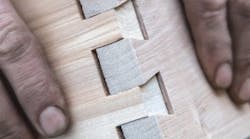Read the full Workforce Week series
To attract and retain millennial-age engineers and operators, many employers acknowledge they must adjust their traditional strategies and requirements.
"We have to be flexible on start times because they aren't anxious to punch a clock," says Sam Hoff, CEO of Patti Engineering, a Control System Integrators Association (CSIA)-certified system integrator in Auburn Hills, Mich. "They also want interesting work, and will begin to disengage quickly if it's not available. There's much movement from job-to-job with young people, and much less implicit loyalty to any one company. At the same time, millennials want to know how their performance compares to others, and want to do something socially useful, so we hold volunteer days and participate in fun events like drag racing or dodgeball."
To boost its recruiting effort, Patti also attends college career fairs and gets to know professors it its fields. However, it's also important to recognize that frequent job changes are a reality that can also have an upside. "People aren't going to be in the same jobs for as long as before, but that's not necessarily a bad thing because former employees can be some of our best customers and best champions for us in those organizations," says Hoff. "Moving between jobs doesn't have to mean burning bridges."
Hoff reports many younger staffers are using tools like Glassdoor, which is a website where employees can post anonymous review of their companies, including good/bad assessments and positions in their different markets, which is another reason for employers to be more aware about promoting themselves. "The old-school mentality doesn't involve this kind of marketing, but that perspective misses the boat," says Hoff. "Whenever we or anyone else is interviewing young candidates, they've already examined your website, and probably check Glassdoor for online evaluations about you from employees. Employers have to address this, and we're already doing it."
Figure 1: Two visitors examine part of the PTU (process training unit) at Endress+Hauser's Community Career+Education Forum (CCEF), which has snowballed in recent years, and is expected to draw more than 1,000 middle-school students and their families, educators, local and regional manufacturers, industry partners, and colleges and universities to the sixth annual event on Sept. 19 in Greenwood, Ind. Source: Endress+Hauser
DMC Inc., a system integrator in Chicago and certified member of the CSIA, begins its recruitment with its online presence long before campus visits and interviews. "The website is critically important," says Frank Riordan, DMC president. "We ask ourselves 'who's our audience?' Our customers come first, but potential employees and partners are right there, too. We showcase our environment and culture for everyone, and we also promote diversity and inclusivity. We hope our audience says, 'I want to be part of that tribe.' We also use social media to highlight our projects and technologies."
After new employees are hired, DMC puts a tremendous amount of energy into their retention. "We provide ongoing opportunities for our staff to socialize and become friends.” DMC provides a monthly activity fund for employees to plan social events of their choosing from beer festivals to axe throwing. DMC also puts a lot of effort into creating career development options, giving people the opportunity to reach their full potential. Variety of work is another factor in employee engagement. “We keep their work challenging by deliberately working on new and interesting technologies, which helps with job satisfaction,” adds Riordan.
Excitement = retention
Because engineers and technicians like a challenge even better than a paycheck, it's vital for their employers to keep their workloads interesting and mentally engaging.
"Many of our customers need help retrofitting controls because even though most manufacturers have already upgraded, many have not, so there's still a lot of legacy equipment out there, such as SLC 500 controllers, which are often maintained by veteran maintenance staff who are retiring. However, the younger generation isn't up to speed on these controls, unless they've been exposed to them, which is becoming more and more unlikely," says Ryan Wasmund, sales and marketing director at Concept Systems Inc., a CSIA-certified system integrator (SI) in Albany, Ore., near Portland. "We try to keep our new engineers working on projects they can be excited about, avoid killing them with long hours, and train on the latest and greatest technology like PLCs, robotics, data handling and some artificial intelligence (AI). This is useful because it helps engineers have a better sense of the progress they're making, rather than working on small portions of larger projects where the progress is more difficult to see and is spread out over longer times."
Because it produces such a diverse basket of technologies, Endress+Hauser has to work with all control systems and their standards, so it's constantly seeking to develop new professionals now and in the future. "Now, smart instruments are also getting wired in, whether it's to recorders or displays, and we have to ask where intelligence can go beyond control systems?," says Jason Knuteson, vice president of marketing at Endress+Hauser. "We're investing in IIoT and digitalization, and developing products, platforms and services that can move data to the cloud to support customers as they're trying to improve their processes, whether they need to make workflows more efficient or reduce downtime."
To inspire the youngsters who will create its digitalized solutions in the future, Knuteson reports that Endress+Hauser will host its sixth annual Community Career + Education Forum (CCEF) on Sept. 19 at its U.S. headquarters in Greenwood, Ind. The event has snowballed over the years, and lately it's attended by more than 1,000 seventh, eighth and ninth graders, their families and educators, as well as many local and regional manufacturers and industry partners, and colleges and universities (Figure 1).
"After six years, we're also beginning to hear back from some students, who attended the first couple of forums. When they come back to talk to us, they're saying they were engaged and inspired," says Knuteson. "We also hired some of our recent college interns and engineers into our rotational engineering program. They report that they applied for positions because they attended CCEF in the past. However, to bring this talent in, we must maintain that initial engagement. Young graduates want exciting workplaces and careers, so we must continue to adapt, update and push innovative technologies. We must let them work with early digital technologies like HART for assessing equipment, or use leading digital networks, Ethernet, Wi-Fi and Bluetooth along with our Heartbeat Technology. It still provides older technologies such as 4-20 mA signals, but also lets users calibrate devices, and call for maintenance before failures occur.
"Similarly, our Netilion IIoT/cloud platform goes beyond delivering data to enabling smart devices to make decisions and report back to users. This is where young staffers like those in rotational engineering can be a big help and get engaged again, which is proven by the fact that we usually retain 95% of the 12-13 originally hired each year."
To inform a wider circle of potential candidates about its availability and priorities, Wasmuind reports Concept uses several strategies:
- Recruiting at local job fairs;
- Always has one to three interns onsite from the Multiple Engineering Cooperative Program administered by four of Oregon's universities and colleges;
- Participates in Linn-BentonCommunity College's mechatronics program;
- Sponsors local FIRST Robotics teams at the elementary and high school levels; and
- Maintains a presence on LinkedIn, including newly produced recruiting video.
"Many of our customers are outsourcing, so we sometimes bring our people, and go to work as part of their staffs, which can be more interesting than just being the SI, where we handle the entire scope, for a single project," says Jim Ford, engineering director at Concept. "This type of business has increased steadily over the past 15 years, and it lets us work on projects from the design phase straight though to start up, and even help with their request for quote (RFQ) process. Most jobs that we and other SIs do are one-off control and automation projects. Some technologies get reused, but we keep things interesting because customers come our way with all kinds of different requests."
Beyond keeping their jobs interesting, Wasmund adds employees can be retained by addressing their personal growth plans. "This involves defining entry-level skills and senior-level skills, clearly defining the path between them, and tailoring a training/development plan specifically for them," explains Wasmund. "We also get granular with projects, so participants understand how their part, such as fixing particular SCADA screens, can help affect the larger problem we're trying to solve. Finally, we hold team-building exercises and events; set side some funds to learn about new tools like virtual reality (VR) goggles; and allow them to work on personal projects, as long it they can show it solves a problem for the company. Later, participants exhibit and share their projects, and we give out awards."
Joe Podolsky, director of business transformation and planning at Servomex Group Ltd., a global gas measurement and analysis supplier, reports that organizations should identify the individuals they want to keep, and give them the flexibility to do external research, or address other key issues so they're less pigeonholed. "Retention begins with making jobs more rich and interesting both inside and outside their companies," says Poldolsky. "They should also use LinkedIn forums or other social media to let individuals and teams demonstrate their successes."








